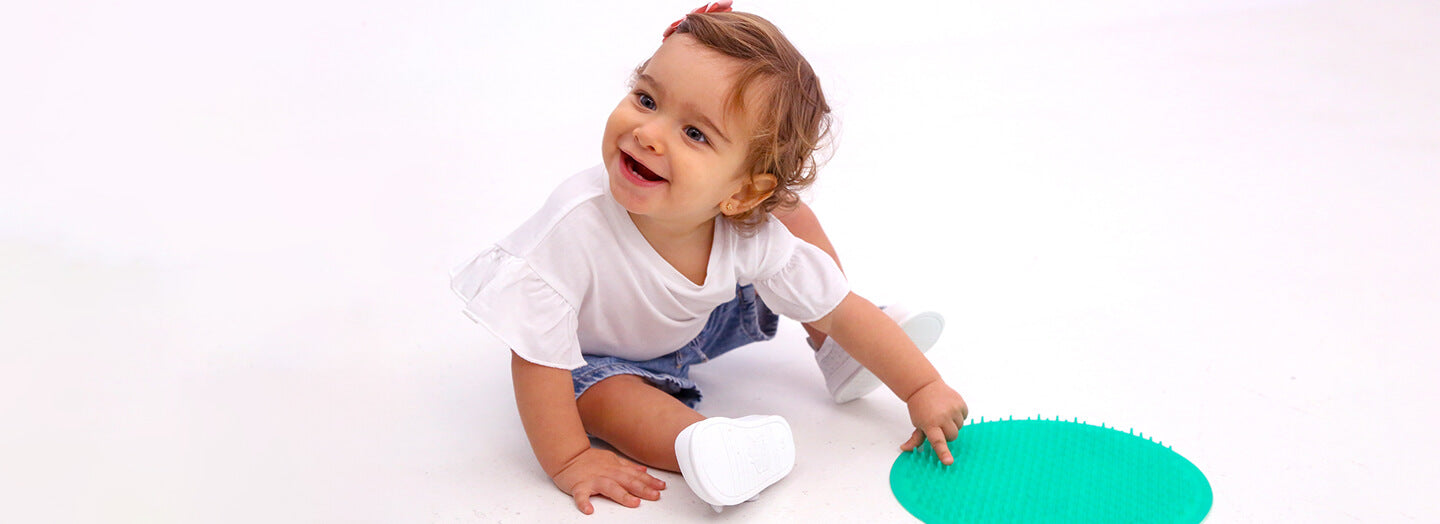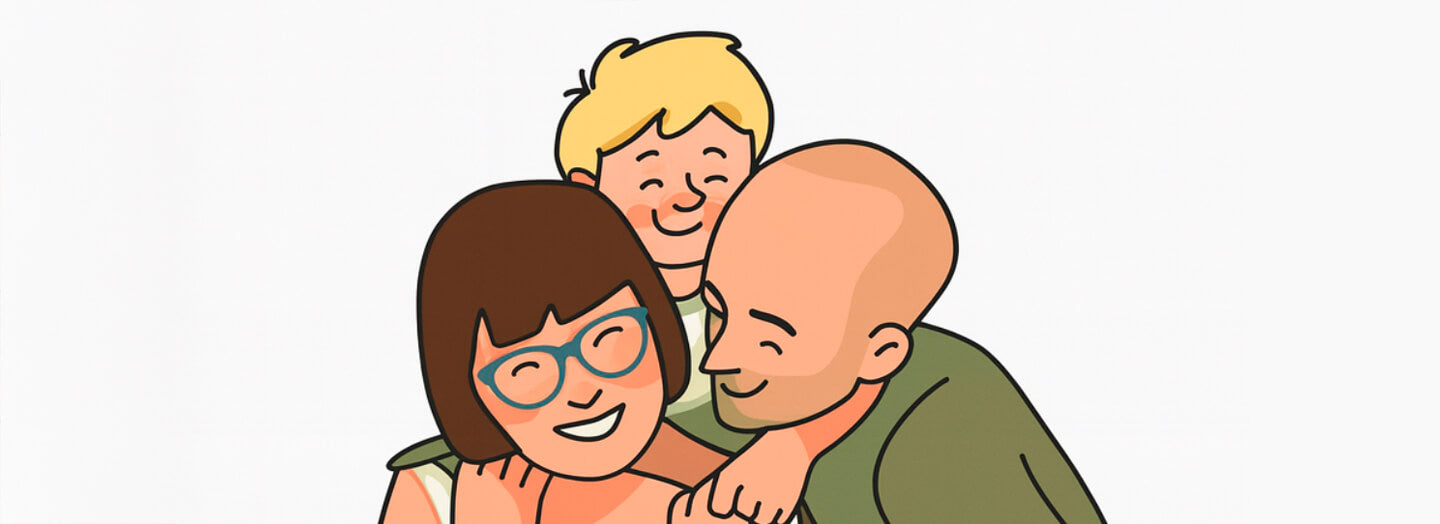The moment a baby takes his or her first steps is one of the most exciting milestones in their development. Watching your little one wobble into your arms is an image that will be etched in your memory forever. But when do babies start walking? What is considered normal? And, above all, how can you support your child in this important stage?
What is considered "normal" at the beginning of the march?
Every baby is unique and has their own pace of development 😍. However, there is a general age range in which most babies start walking, which is usually between 9 and 18 months . Some babies may start walking earlier, while others take a little longer, and that's completely normal! 💪🏻
Factors that influence the initiation of walking
Whether your baby is already trying to walk or, on the contrary, is taking it more calmly, depends on various factors, all of them completely normal, which can influence the moment when your little one starts walking. One of the most important is genetics : if you or your partner started walking early or late, it is possible that your baby will follow a similar pattern.
In addition, your little one's personality determines this and other milestones in his development: the most active and curious babies tend to show interest in walking earlier. Provide him with an environment in which he feels comfortable , a safe but at the same time stimulating space, to encourage his motor development and take note of some milestones that usually happen beforehand , such as crawling, standing up and maintaining balance are key steps that will indicate that your little one is ready to walk.
Signs your baby is ready to walk
And that's precisely what we're going to talk about now. What are the signs that your baby is going to start walking soon? Take note ✔️: when you see them, you'll know that walking is about to appear.
- Crawling with ease : Crawling teaches babies that they can move around on their own and strengthens the muscles needed for walking.
- Standing up with support from furniture : When this happens, you will know that your baby is gaining the strength in his legs necessary to start walking.
- Taking lateral steps : holding on to furniture and moving sideways is an indicator that the first steps are already very close 🤩.
- Standing upright without support , even for just a few seconds, shows that you are gaining the balance needed to walk without support.
You watch your baby as he plays and moves, when you detect several of these signs, you will know that you will see him walking very soon!
Stages of motor development before walking
The path to first steps is not linear, but is full of small motor achievements that begin to occur practically from birth. These are the main stages that prepare your baby to walk:
- Around 3-4 months (sometimes even earlier) babies begin to hold their heads up by themselves.
- Between 5 and 7 months they learn to roll over and manage to sit - and stay seated - without support.
- Around 8-10 months, many babies begin to crawl , which strengthens their muscles and improves their coordination.
- Between 9 and 12 months, many babies are able to stand up by holding on to a piece of furniture or your hand.
- Finally, between 12 and 18 months they achieve balance and are able to take their first steps independently .

Don't try to skip steps! We all want our babies to develop, but each of these stages is essential for the little one to acquire the strength, coordination and confidence necessary to walk.
How can I help my baby take his first steps?
When you start to see the signs that your baby is ready, and always without forcing, you can encourage and support him in the acquisition of this new skill to help him walk more quickly. Playing is always the best option (and the most fun 🥳) to encourage your baby's learning: place some of his favorite toys slightly out of his reach to motivate him to move.
If you see that your baby is trying to walk, help him by offering your hands for him to lean on . Try to position them so that he doesn't have to raise his arms to pick them up, but can walk in a natural posture, and create a safe environment around him by removing potentially dangerous objects (i.e. anything he can grab and break) and placing corner protectors on furniture.

But the most important thing, what you should never, ever forget during this and any other process of your little one's development, is to accompany him and celebrate all his small achievements: positive reinforcement is what will most encourage him to keep trying❤️.

The best shoes for first steps: how to choose environmentally friendly footwear?
You already know that we are firm believers that, while the baby is not walking, the best thing for him is not to wear shoes. However, once you see that walking is imminent 👣, it is time to start looking at the shoes that you will need soon and it is essential to choose the best option so that the footwear does not interfere with his development and growth.
A shoe that respects the natural development of the foot must meet these characteristics:
- The sole : it should be thin, to allow the foot to receive as many stimuli as possible; hard, to protect the soles from any damage, and flexible, so that the foot can move naturally.
- Shape : The shoe should be completely flat, with the heel not higher than the toe, and spacious, especially in the front area, allowing the toes to move freely inside.
- The material : It should always be made of breathable materials, such as leather, textile or fierce microfiber , to avoid moisture and keep your feet comfortable.
- The insole : should be completely flat, like the shoe, and removable, to make it easier to check the size.
- The fit : a Velcro adjustment system is more comfortable and facilitates independence when the little one can begin to put on his or her shoes alone.

At Zapato Feroz we have the best shoes, designed specifically for your baby's first steps 👣.
How to choose the right size?
Choosing the right size for your little one's shoes can be quite a challenge, especially when they are so small that they usually don't want to collaborate in the process. That's why at Zapato Feroz we have created a size guide that you can consult at any time, with some tips and tricks that will make it easier for you to choose the right size shoe.
One of the most practical recommendations is to create your own insole at home, drawing the outline of your little one's foot on a piece of paper . This way, when you go to buy the shoe, you will only have to remove the insole and check that the outline fits inside, leaving the recommended margin of between 0.8 and 1.2 centimetres: if it is more, the shoe will be too big, while if it is less, it will be too tight.
In addition, on our website you can directly download the insoles of each model , so that if you cannot come to Ferozland and try our shoes here, you can buy them online with the assurance that you are taking the correct size. ☺️
What if my baby takes longer to walk?
As parents, we are always worried about whether our children do things much earlier or later than they should and, on many occasions, we cannot help but compare our babies with others in their environment who are already crawling 👶 or have even started to walk.

However, it is completely normal for some babies to take longer to walk than others , since the development pattern, as we have already mentioned, is not exactly linear in all children. But when is it advisable to consult a specialist? 👩⚕️
As parents, you are the ones who know your baby best and you should trust your instincts at all times, it is usually advisable to consult a specialist to rule out any developmental problems if your baby has not taken his first steps after 18 months .
Remember that every baby has their own pace and that your support and patience 🥰 are essential for them to grow healthily and reach, at their own pace, the different developmental milestones.
Myths and truths about babies who start walking
There are many popular beliefs about the onset of walking in babies, some of which might make some sense, while others are based on popular beliefs with no scientific basis. Here are some common myths and their real answers:
- ❌ Myth: Using walkers helps babies walk faster.
- ✔️ Truth: Walkers are not only dangerous, as they create a false sense of security that can lead to accidents, but they can also delay motor development.
- ❌ Myth: Skipping the crawling stage is bad.
- ✔️ Truth: Some babies don't crawl and go straight to walking, which isn't necessarily a problem. What we shouldn't do is "force" the baby to walk before he's ready for it, but if he starts doing it naturally without having crawled, it's okay.
- ❌ Myth: Stiff shoes are better for first steps.
- ✔️ Truth: Shoes that are too rigid can limit the natural movement of the foot, not only before and during the first steps, but throughout life, so they are not recommended at any age.
As parents, it's natural to feel anxious about watching our children reach each developmental milestone. However, it's important to remember that every baby has their own pace. Comparing your little one to other children in their environment can create unnecessary stress for both you and them.
So, instead of worrying, celebrate every little achievement and offer your baby the emotional support he needs . Your love and patience are the best allies in this process. ♥️
Frequently Asked Questions
Is it bad for my baby to skip the crawling stage?
Not at all! Some babies go straight to walking without crawling and this does not imply a problem in their development.
What footwear is best for first steps?
The ideal footwear to accompany your baby in his first steps 👣 must be flexible, breathable and fit the foot correctly, leaving room for the movement of the toes and correct development. At Zapato Feroz you will find options designed especially for this stage.
How to avoid accidents when your baby starts walking?
Make sure the environment is safe: remove dangerous and unstable objects, place corner protectors on furniture, keep breakable objects out of reach and, above all, supervise your baby at all times. It is a challenging stage, but very rewarding.






